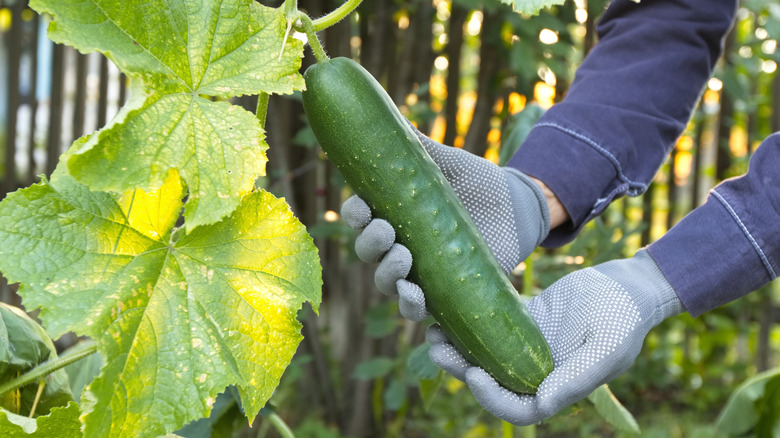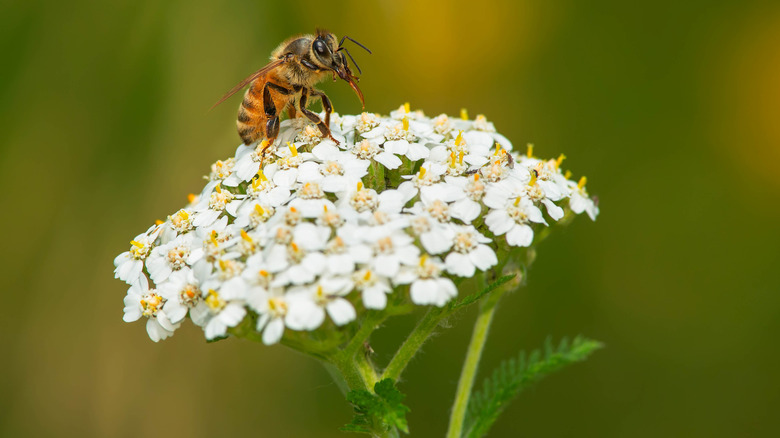The Soil-Enriching Herb That Doubles As An Excellent Cucumber Companion Plant
If you're used to growing cucumbers in your garden, you must know how vulnerable they can be to damage from pests like aphids and beetles. Besides directly feeding on cucurbits, these pests also cause a condition in cucumbers called bacterial wilt that can result in — as the term suggests — wilting, defoliation, and even premature plant death. Planting yarrow alongside cucumbers is a great way to organically avoid this damage since yarrow attracts a number of predatory insects that will help you get a handle on garden pests. Apart from being an excellent companion plant for cucumber, yarrow can also heavily enrich the soil in your garden by mining key minerals to the top, acting as a natural mulch, and assisting soil aeration.
Yarrow (Achillea millefolium) is a drought-resistant plant that loves growing in nutritionally poor, well-drained, and sandy soil. While it must be kept away from strong winds, it thrives when exposed to full sun. This plant can survive throughout USDA Hardiness zones 3 to 9. A common sight across roadsides, fields, and lawns alike, the plant boasts several medicinal and culinary benefits in addition to elevating your garden aesthetics with its mass of flowers. Yarrow is also known to repel annoying mosquitoes, ticks, and ants away from your garden's soothing ambiance. No wonder even Joanna Gaines grows this stunning wildflower in her garden!
Yarrow attracts beneficial insects and improves the soil
Growing yarrow in your garden will invite several pest-eating insects, such as parasitic wasps, ladybugs, tachinid flies, and hoverflies, that will gladly feed on cucurbit beetles and other cucumber pests, while saving you from the troubles of using chemicals for the purpose. Yarrow can also boost pollination in cucumbers by attracting one of its most important pollinators: honeybees. Yarrow is beneficial for cucumbers in the long run as well since it improves soil conditions and boosts nutrient availability. By growing deep, fibrous roots into the soil, it can break up compacted soil structure and improve aeration. While more studies need to be done to confirm, yarrow is also believed to accumulate minerals like potassium, magnesium, calcium, phosphorus and copper in the soil, in theory making them available for cucumbers and other plants in your garden.
When planting yarrow, just make sure that the seeds are planted 12 to 18 inches apart from each other and a minimum of 10 inches away from the cucumber beds so that they don't end up competing for resources like sunlight and water. Since yarrow can be quite invasive in some regions, consider choosing only sterile cultivars (such as 'Petra') to ensure it does not take over your entire garden. For the same reason, you should also avoid planting them in raised beds and control their seed propagation by clipping off flower heads. If you still find them encroaching into uninvited territory, use the divide and control method to manage yarrow's spread.

